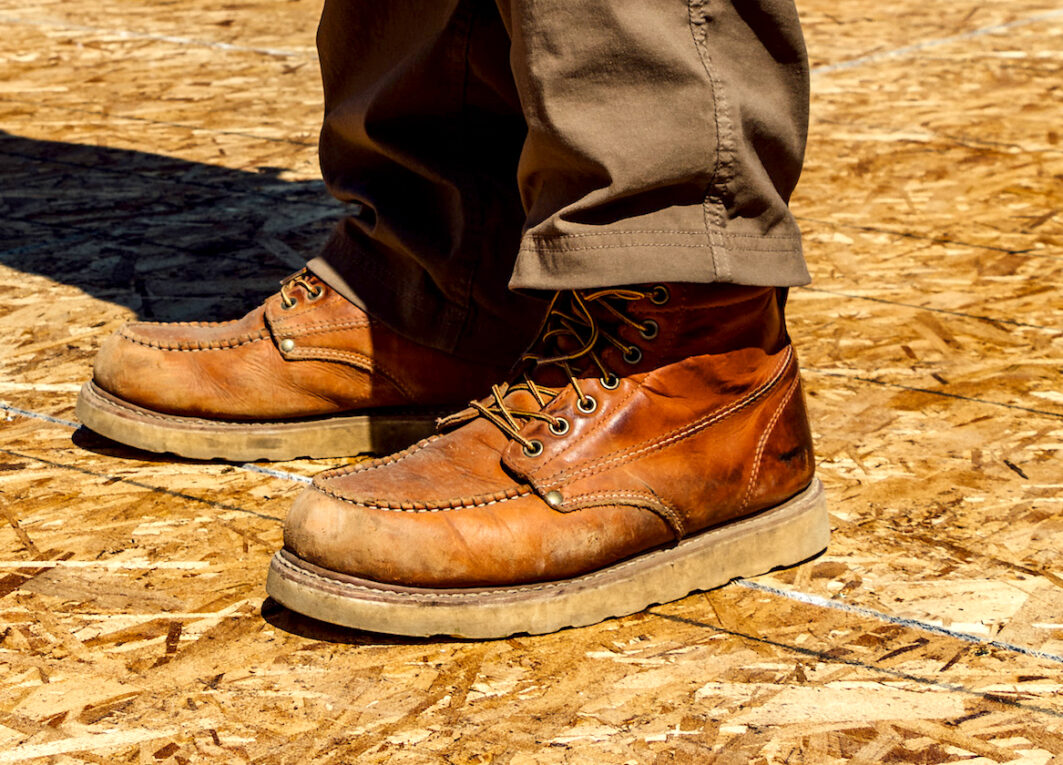Work boots are specialized footwear designed for occupational health and safety purposes. They are commonly worn by construction workers, mining personnel, and other professionals involved in labor-intensive jobs. Construction sites present various hazards that can cause injuries to feet if not properly protected. Work boots play a crucial role in protecting workers from potential dangers on the job.
Types of Work Boots
There are different styles of work boots suitable for diverse jobsite conditions:
Steel-Toe Work Boots
These boots feature reinforced steel toes that can protect wearers from crush injuries. The toes are capable of withstanding impact forces of up to 75 pounds from falling objects. Steel-toe boots are mandatory personal protective equipment (PPE) on most construction sites. They instill a basic layer of protection for workers’ toes and feet.
Electrical Hazard Work Boots
For jobs involving electrical work or electricity in wet conditions, special dielectric Work Boots are recommended. These boots are manufactured from non-conductive materials to prevent electrical shocks. Their soles contain insulating properties to avoid current flow during accidental contact with live wires or circuits. Electricians, power line technicians, and others working near electricity require dielectric boots.
Waterproof Work Boots
Jobs taking place outdoors or in wet conditions necessitate waterproof boots. Leather and rubber materials create barricades against water seepage. Waterproof boots protect feet from rain, slush, flooding, and other liquid exposures that could lead to infections or hypothermia. Construction crews working near bodies of water or in damp environments put on waterproof boots.
Insulated Work Boots
Temperatures on construction sites fluctuate widely depending on location and time of year. Insulated boots provide warmth for crews operating in cold climates or frigid temperatures. Thermal insulation blocks heat loss from feet, maintaining comfort and dexterity even in freezing conditions. Insulated boots, along with other cold-weather PPE, allow for safe work during winter months.
Ankle Support Work Boots
Certain jobs demand more support and stability than low-cut boots provide. Ankle-high work boots lock feet firmly in place and brace against twists or sprains. The additional protection benefits occupations like roofing, scaffolding work, and tasks requiring lots of walking on uneven surfaces. Ankle support boots lessen risks of occupational lower limb injuries.
Features and Components of Work Boots
Beyond basic safety functions, today’s work boots integrate numerous ergonomic features for performance and convenience:
Composite Safety Toes
New composite materials have largely replaced traditional steel toes. Composites are lighter and more flexible while retaining toe protection standards. Their comfort allows for longer shift wearing with less fatigue.
Goodyear Welted Construction
Top-quality boots utilize Goodyear welt construction, where the upper leather is sewn to the sole rather than being cemented. This allows for resole replacement to extend boot life significantly as soles wear down over time. Resoleable boots provide better value in the long run.
Oil and Slip Resistant Soles
Slip-resistant tread patterns and oil-resistant compounds grip hazardous surfaces better than street shoes. Anti-slip soles counter wet, oily, muddy, or debris-covered floors that contribute to falls—a leading cause of injuries. Special compounds repel oils and chemicals spilled on jobsites.
Waterproof membrane linings
Gore-Tex and similar membranes create invisible barriers stopping water while allowing vapor to escape, preventing sweat build-up. They maintain dry, comfortable feet even in soaked conditions, preventing health issues from prolonged exposure to moisture.
High Abrasion-Resistant Toecaps
Cut- and puncture-resistant toe caps guard against sharp falling or rolling objects more effectively than steel alone. Multi-layer toe boxes resist cuts and tears to the upper leather over time from constant scuffs and impacts. Their durability cuts replacement costs.
Orthotic Insert Options
Removable orthotic pads are available for boots, shaped to provide arch support, stability, shock absorption—reducing Musculoskeletal Disorder (MSD) risks over prolonged use. Custom orthotics can address plantar fasciitis, fallen arches, and other existing foot conditions.
Cushioned Midsoles
Shock-absorbing cushioning in boot heels and balls of feet lessen impacts from jumping, carrying loads, and frequent lifting. Cushioning distributes stress evenly, easing strain on joints, muscles, and tissues over many hours standing and working. This decreases occupational injuries linked to repetitive motions.
Lacing Systems
Some work boots incorporate quick-lace options allowing wearers to loosen and tighten with one hand without removing gloves. Speedlace, gaslift, and other fastening technologies save seconds per boot done and undone throughout shifts. They counteract delays that add up over time.
Maintenance and Storage of Work Boots
Proper care extends the life and safety functions of work boots:
Regular Cleaning
Construction sites yield dirt, debris, chemicals, and potential contaminants trapped in boots daily. Rinsing away residues prevents materials from abrading leather prematurely or causing damage over time. Optional leather conditioners restore suppleness as well.
Allow Drying Time
Along with cleaning, it’s important to allot open-air drying time before storing damp boots. Encasing wet footwear risks trapping moisture ideal for bacterial growth leading to odors and infections. Daily air drying preserves leather integrity and prevents risks to foot health.
Boot Rotation
Changing between two or more pairs daily distributes wear-and-tear more evenly for prolonged durability. Rotating allows boots partial rest periods to fully dry out internally before being reworn. It also gives leather flexibility to maintain shape compared to permanent creasing from continuous sole compression.
*Note:
1. Source: Coherent Market Insights, Public sources, Desk research
2. We have leveraged AI tools to mine information and compile it

